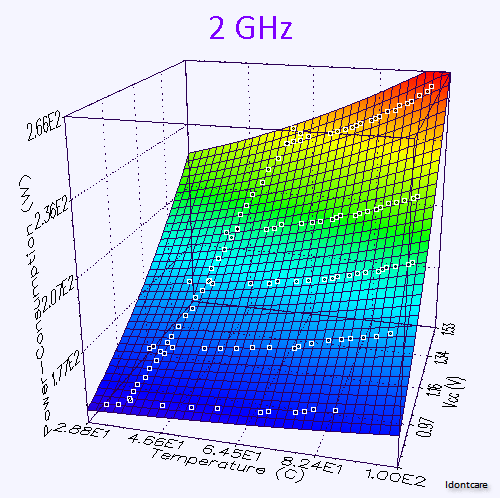Gipsel: My point was to stick up for this statement:
Alexko said:…apart from DP, Hawaii looks like a great GPGPU chip
Follow along with the video below to see how to install our site as a web app on your home screen.
Note: This feature may not be available in some browsers.
Alexko said:…apart from DP, Hawaii looks like a great GPGPU chip
TSMC claims 30% less power vs. 28nm HPM, for what it's worth.
http://www.cadence.com/Community/bl...-20nm-16nm-finfet-and-3d-ic-technologies.aspx
Well it would be more credible if the other folding results shown there would be consistent, but the implicit/single precision one also shows the r290x being slower than 7970. So that number there doesn't have much credibility...
I think they would rather lose a little on perf/W and win by a bit more on perf/mm2, which is likely to be the reason why they went for the latter.
The shader engines have been called Pixel Pipes in the M&M architecture presentation at AFDS11.
Both negative characteristics also kills any chance for it to be used in a mobile card and for its chance to make a dual version GPU version of this card.
On what basis?Not really. Performance/mm2 can be killed if RMA return is too high from returns. Its clear that this card is being pushed closer to its limits than gk110, so I would expect higher returns.
All chips are "hot" when you run them, no matter what. Hawaii, as a chip, is no different from any other. The only difference is we have changed the fan controller programming to explicitly target an operating point; that operating point can be higher or lower the only question it the performance you want and the thermal capacities of the solution.Performance/watt and heat are king.
IN super computers for example, chips are often passively cooled and such a hot chip would be unusable in such a system.
Both negative characteristics also kills any chance for it to be used in a mobile card and for its chance to make a dual version GPU version of this card.
Not really. Performance/mm2 can be killed if RMA return is too high from returns. Its clear that this card is being pushed closer to its limits than gk110, so I would expect higher returns.
In addition, perf/mm doesn't matter at in the professional market.
Performance/watt and heat are king.
IN super computers for example, chips are often passively cooled and such a hot chip would be unusable in such a system.
Both negative characteristics also kills any chance for it to be used in a mobile card and for its chance to make a dual version GPU version of this card.

Not really. Performance/mm2 can be killed if RMA return is too high from returns. Its clear that this card is being pushed closer to its limits than gk110, so I would expect higher returns.
IN super computers for example, chips are often passively cooled and such a hot chip would be unusable in such a system.
Both negative characteristics also kills any chance for it to be used in a mobile card and for its chance to make a dual version GPU version of this card.
Yeah tbh I think AMD can get away with the 95C temps and the explanation for why. The issue is the fan noise and throttling. If this is what we've to expect from them going forward they are going to have to provide better cooling. They've left a lot of performance on the table on some reviews, and crossfire is falling behind Titan Sli.
Nvidia's boost still comes across as a bit less upfront in what you end up with to me. They've basically given the user a reasonably quiet and cool card with much more variable performance if used in a less ideal environment. AMD have now gone down the same path, but have given the user more choice.
If I'm not mistaken AMD gives you a choice of two fan profiles - uber and quiet. How is that more choice and "more upfront" than the voltage, temperature and power controls of nVidia's boost?
Am I misunderstanding how these things work?

